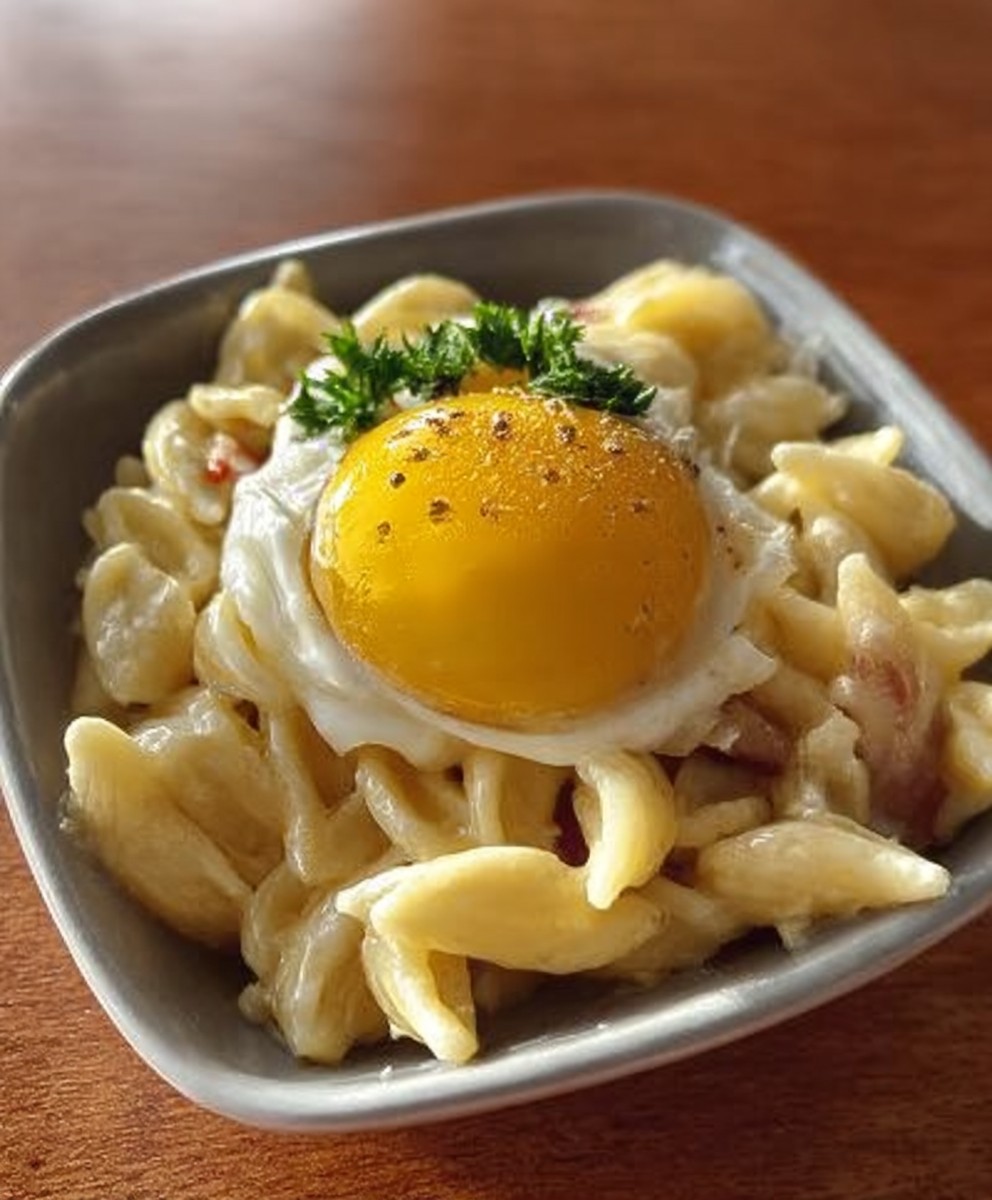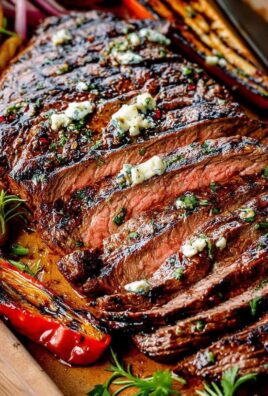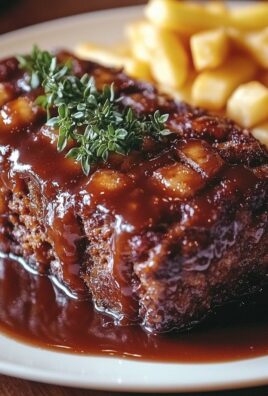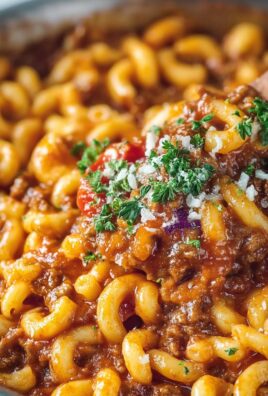Two Yolk Carbonara: Prepare to indulge in a symphony of creamy, cheesy, and utterly decadent flavors with this simplified yet authentic take on a Roman classic. Forget the heavy cream and complicated techniques; this recipe delivers the rich, satisfying experience of traditional carbonara using just two egg yolks, proving that less is truly more.
Carbonara, a dish steeped in Roman history, has a surprisingly debated origin. Some believe it was created as a hearty meal for Italian charcoal workers (“carbonari”), while others suggest it evolved from a post-World War II dish influenced by American rations. Regardless of its true beginnings, carbonara has become a beloved staple of Italian cuisine, celebrated for its simplicity and bold flavors.
What makes two yolk carbonara so irresistible? It’s the perfect balance of textures the silky smooth sauce clinging to perfectly cooked pasta, the salty bite of guanciale (or pancetta), and the sharp tang of Pecorino Romano cheese. People adore carbonara because it’s a quick and easy meal that feels incredibly luxurious. This version, using just two egg yolks, makes it even more accessible for weeknight dinners without sacrificing any of the authentic flavor. Get ready to experience carbonara perfection!
Ingredients:
- 2 large egg yolks
- 1 whole large egg
- 1/2 cup grated Pecorino Romano cheese, plus more for serving
- 1/4 cup grated Parmesan cheese, plus more for serving
- 1/4 teaspoon freshly ground black pepper, plus more for serving
- 4 ounces guanciale, pancetta, or bacon, cut into 1/4-inch dice
- 1 pound spaghetti or bucatini
- 1/4 cup reserved pasta water, plus more as needed
- Salt, to taste (be mindful of the saltiness of the guanciale/pancetta/bacon and cheese)
Preparing the Guanciale (or Pancetta/Bacon):
- First, let’s get that delicious guanciale (or pancetta/bacon) ready. Place the diced guanciale in a large skillet over medium heat. We want to render the fat slowly, so don’t crank up the heat too high. If you do, it will burn before it gets crispy.
- Cook the guanciale, stirring occasionally, until it’s golden brown and crispy. This usually takes about 8-10 minutes. Keep a close eye on it, as it can go from perfectly crispy to burnt very quickly.
- Once the guanciale is crispy, remove it from the skillet with a slotted spoon and transfer it to a plate lined with paper towels. This will help absorb any excess grease. Set the crispy guanciale aside for later.
- Now, here’s a crucial step: Don’t discard the rendered fat in the skillet! This is liquid gold and will add incredible flavor to our carbonara. Let the fat cool slightly in the skillet. If there are any burnt bits in the fat, you can strain it through a fine-mesh sieve lined with cheesecloth. However, if it looks clean, just leave it as is.
Preparing the Egg and Cheese Mixture:
- While the guanciale is cooking, let’s prepare the egg and cheese mixture. In a medium bowl, whisk together the two egg yolks and the whole egg until they are light and slightly frothy. Don’t over-whisk; just make sure they are well combined.
- Add the grated Pecorino Romano cheese and Parmesan cheese to the bowl with the eggs. I like to use a combination of both cheeses for the best flavor, but you can use all Pecorino Romano if you prefer a sharper, saltier taste.
- Next, add the freshly ground black pepper to the bowl. Don’t skimp on the pepper! It adds a wonderful warmth and spice to the carbonara. I recommend using freshly ground pepper for the best flavor.
- Whisk all the ingredients together until you have a smooth, creamy paste. Make sure there are no lumps of cheese. If the mixture seems too thick, you can add a teaspoon or two of water to thin it out slightly. Set the egg and cheese mixture aside.
Cooking the Pasta:
- Now it’s time to cook the pasta. Bring a large pot of salted water to a rolling boil. Make sure you use plenty of water at least 6 quarts for a pound of pasta. And don’t be afraid to salt the water generously. The pasta should taste slightly salty when it’s cooked.
- Once the water is boiling, add the spaghetti or bucatini to the pot. Cook the pasta according to the package directions until it is al dente. Al dente means “to the tooth” in Italian, and it refers to pasta that is firm but not hard. It should have a slight bite to it.
- About 1 minute before the pasta is done cooking, reserve about 1/4 cup of the pasta water. This starchy water is essential for creating a creamy sauce. Use a measuring cup or a small bowl to scoop out the water and set it aside.
- Drain the pasta immediately in a colander. Don’t rinse the pasta! We want to keep the starch on the surface of the pasta, as it will help the sauce cling to it.
Assembling the Carbonara:
- This is where the magic happens! Working quickly, add the drained pasta to the skillet with the rendered guanciale fat. Toss the pasta to coat it evenly with the fat. This will help prevent the pasta from sticking together and will add a ton of flavor.
- Remove the skillet from the heat. This is important! If the skillet is too hot, the eggs will scramble and you’ll end up with a clumpy, unpleasant mess.
- Immediately pour the egg and cheese mixture over the hot pasta. Toss quickly and continuously to coat the pasta evenly with the sauce. The heat from the pasta will gently cook the eggs, creating a creamy, luscious sauce.
- If the sauce seems too thick, add a tablespoon or two of the reserved pasta water at a time, tossing continuously, until you reach your desired consistency. The sauce should be creamy and cling to the pasta.
- Add the crispy guanciale to the pasta and toss to combine. Reserve a few pieces of guanciale for garnish.
- Season the carbonara with salt and pepper to taste. Be mindful of the saltiness of the guanciale and cheese. You may not need to add much salt.
Serving:
- Serve the carbonara immediately in warmed bowls. Garnish with extra grated Pecorino Romano cheese, freshly ground black pepper, and the reserved crispy guanciale.
- A final touch I love is adding a single egg yolk on top of each serving. This is optional, but it adds an extra richness and creaminess to the dish. If you choose to do this, make sure you use very fresh, high-quality eggs.
- Enjoy your homemade carbonara! It’s best enjoyed immediately, while the sauce is still creamy and the pasta is hot.
Tips for Success:
- Use high-quality ingredients: The better the ingredients, the better the carbonara will taste. Use fresh eggs, good-quality cheese, and authentic guanciale or pancetta.
- Don’t overcook the pasta: Al dente pasta is essential for a good carbonara. Overcooked pasta will be mushy and won’t hold the sauce well.
- Work quickly: The key to a creamy carbonara sauce is to work quickly and efficiently. The heat from the pasta will gently cook the eggs, creating a smooth, luscious sauce.
- Don’t overheat the eggs: If the skillet is too hot, the eggs will scramble and you’ll end up with a clumpy, unpleasant mess. Remove the skillet from the heat before adding the egg and cheese mixture.
- Adjust the sauce to your liking: If the sauce seems too thick, add more pasta water. If it seems too thin, add more cheese.
- Season to taste: Be mindful of the saltiness of the guanciale and cheese. You may not need to add much salt.
Variations:
- Vegetarian Carbonara: For a vegetarian version, you can substitute the guanciale with mushrooms or other vegetables. Sauté the vegetables in olive oil until they are tender and slightly browned.
- Spicy Carbonara: Add a pinch of red pepper flakes to the egg and cheese mixture for a spicy kick.
- Smoked Paprika Carbonara: Add a teaspoon of smoked paprika to the egg and cheese mixture for a smoky flavor.
- Lemon Carbonara: Add the zest of one lemon to the egg and cheese mixture for a bright, citrusy flavor.
Enjoy experimenting and finding your perfect carbonara recipe!
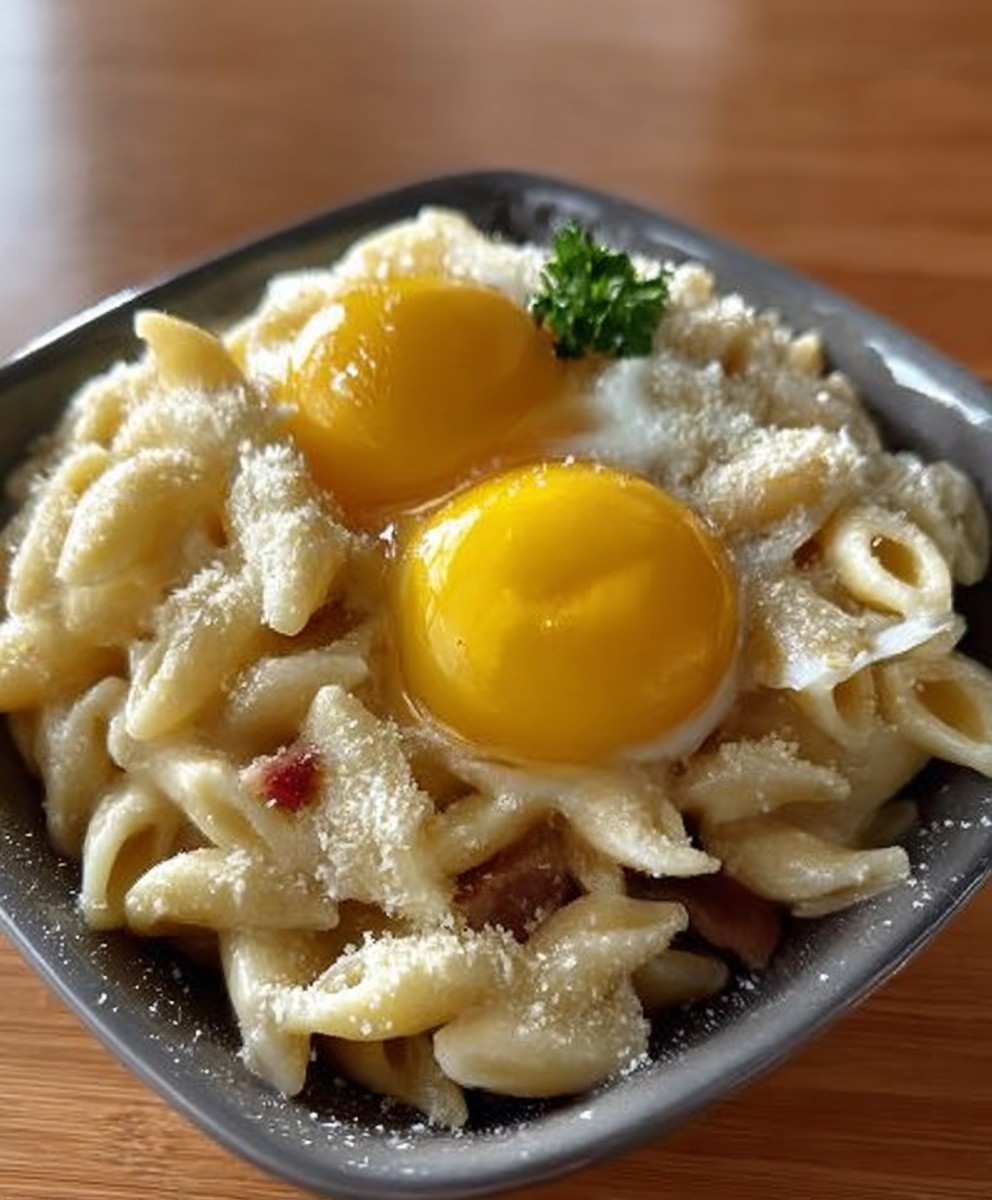
Conclusion:
So, there you have it! This Two Yolk Carbonara isn’t just another pasta dish; it’s a creamy, dreamy, intensely flavorful experience that’s surprisingly simple to achieve. I know, I know, carbonara can seem intimidating, but trust me, this recipe cuts through the fuss and delivers authentic taste without the stress. The richness from those two egg yolks creates a sauce that clings beautifully to every strand of pasta, while the crispy guanciale (or pancetta, if you prefer) adds a salty, savory crunch that’s simply irresistible.
Why is this a must-try? Because it’s a weeknight-friendly indulgence that elevates your dinner game without requiring hours in the kitchen. It’s the kind of dish that makes you feel like you’re dining in a cozy Italian trattoria, even if you’re just in your pajamas on the couch (no judgment here!). And honestly, who doesn’t need a little bit of that feeling in their life?
But the best part? It’s incredibly versatile! While I’m a purist at heart and love the classic combination, feel free to experiment and make it your own.
Serving Suggestions and Variations:
* Spice it up: Add a pinch of red pepper flakes to the sauce for a little kick.
* Veggie boost: Toss in some sautéed mushrooms or peas for added nutrients and texture.
* Cheese, please!: While Pecorino Romano is traditional, a blend of Pecorino and Parmesan works beautifully.
* Herb it up: A sprinkle of fresh parsley or chives adds a pop of freshness.
* Wine Pairing: A crisp, dry white wine like Pinot Grigio or Vermentino complements the richness of the carbonara perfectly.
* For a Lighter Option: While the richness is part of the charm, you can use a bit of pasta water to thin the sauce if you prefer a lighter consistency. Just be careful not to overdo it!
* Guanciale Alternative: If you can’t find guanciale, pancetta is a great substitute. You can even use thick-cut bacon in a pinch, but be mindful of the smokiness.
Ultimately, the beauty of this Two Yolk Carbonara lies in its simplicity and adaptability. It’s a blank canvas for your culinary creativity, so don’t be afraid to play around and find what you love. The key is to use high-quality ingredients and to cook with love (yes, I know it sounds cheesy, but it’s true!).
I’m so confident that you’ll love this recipe, and I can’t wait to hear about your experience. Seriously, give it a try! It’s the perfect dish for a cozy night in, a quick and easy weeknight dinner, or even a special occasion.
So, what are you waiting for? Grab your pasta, your eggs, and your guanciale (or pancetta!), and get cooking! And please, please, please, share your creations with me! Tag me in your photos on social media, leave a comment below, or send me an email. I’m genuinely excited to see how you make this Two Yolk Carbonara your own. Happy cooking! I hope you enjoy this recipe as much as I do. Buon appetito!
Two Yolk Carbonara: The Ultimate Rich & Creamy Recipe
Authentic, creamy Carbonara with guanciale, Pecorino Romano, Parmesan, and perfectly cooked pasta. A classic Italian dish ready in minutes!
Ingredients
- 2 large egg yolks
- 1 whole large egg
- 1/2 cup grated Pecorino Romano cheese, plus more for serving
- 1/4 cup grated Parmesan cheese, plus more for serving
- 1/4 teaspoon freshly ground black pepper, plus more for serving
- 4 ounces guanciale, pancetta, or bacon, cut into 1/4-inch dice
- 1 pound spaghetti or bucatini
- 1/4 cup reserved pasta water, plus more as needed
- Salt, to taste (be mindful of the saltiness of the guanciale/pancetta/bacon and cheese)
Instructions
- Place diced guanciale in a large skillet over medium heat. Cook, stirring occasionally, until golden brown and crispy (8-10 minutes). Remove with a slotted spoon and place on a paper towel-lined plate. Reserve the rendered fat in the skillet.
- In a medium bowl, whisk together egg yolks and whole egg until light and frothy. Add Pecorino Romano cheese, Parmesan cheese, and black pepper. Whisk until smooth and creamy. If too thick, add a teaspoon or two of water.
- Bring a large pot of salted water to a rolling boil. Add spaghetti or bucatini and cook according to package directions until al dente. Reserve 1/4 cup of pasta water before draining. Drain pasta in a colander (do not rinse).
- Add drained pasta to the skillet with the rendered guanciale fat. Toss to coat. Remove the skillet from the heat.
- Pour the egg and cheese mixture over the hot pasta. Toss quickly and continuously to coat the pasta evenly. If the sauce is too thick, add pasta water, a tablespoon at a time, until desired consistency is reached.
- Add the crispy guanciale to the pasta and toss to combine. Reserve a few pieces of guanciale for garnish.
- Season with salt and pepper to taste.
- Serve immediately in warmed bowls. Garnish with extra grated Pecorino Romano cheese, freshly ground black pepper, and reserved crispy guanciale. Optional: Add a single egg yolk on top of each serving.
Notes
- Use high-quality ingredients for the best flavor.
- Don’t overcook the pasta; al dente is key.
- Work quickly to prevent the eggs from scrambling.
- Remove the skillet from the heat before adding the egg mixture.
- Adjust the sauce consistency with pasta water as needed.
- Be mindful of the saltiness of the guanciale and cheese when seasoning.

